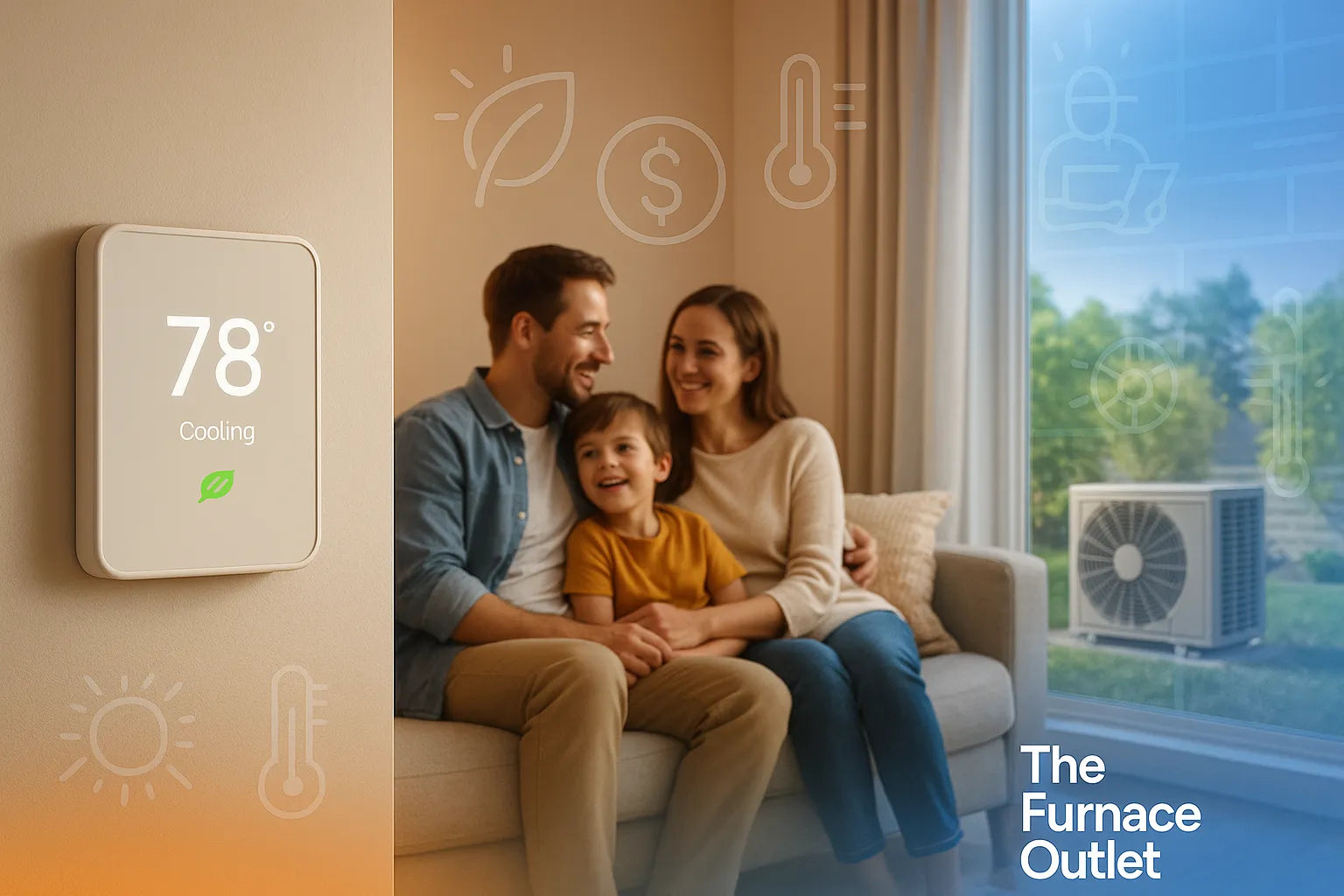ROI 101: Why Pennies Matter in HVAC
A furnace tech once told me, “The cheapest degree is the one you never have to heat or cool.” He was talking about return on investment (ROI). In HVAC, ROI measures how fast an upgrade pays for itself through lower utility bills or longer equipment life. Most high-ROI projects share three key traits: low upfront costs, immediate energy reduction, and zero downside to comfort. Think of weather‑stripping a leaky door or swapping a clogged filter. These basics set the stage for bigger upgrades—because money saved today funds tomorrow’s improvements. Keep ROI in mind before you buy that shiny new unit or tackle attic insulation.
Seal First, Condition Later
Air leaks are sneaky energy thieves. Start with a lit incense stick near the window frames; any sideways smoke shows a draft. Grab a $6 tube of exterior-grade caulk and seal the visible gaps, then add weatherstripping around the doors. In older homes, duct sealing offers even bigger paybacks—lost duct air can account for 20‑30 % of conditioning costs. When the envelope is tight, your HVAC finally works only on the air you breathe, trimming bills by up to 15 %. The best part? You feel fewer hot‑and‑cold spots before the next utility bill even arrives.
Insulation: Your Year‑Round Blanket
Imagine wearing a down jacket in January and a straw hat in July—that’s what proper insulation does for a house. Focus on the attic first; heat rises and escapes faster than anywhere else. Most U.S. homes fall short of the Department of Energy’s R‑49 recommendation. Blown‑in cellulose is DIY‑friendly, while spray foam seals and insulates in one pass. Combine attic work with wall insulation during renovations for compound savings. In cold or temperate climates, homeowners routinely recoup insulation costs in three to five winters, then enjoy pure savings for decades.
Tune‑Ups: Preventive Care That Pays
Skipping HVAC maintenance is like never changing your car’s oil—eventually, the engine knocks. A spring and fall tune‑up includes coil cleaning, refrigerant check, and airflow verification. These quick steps restore factory efficiency and can cut energy use by 5–15 %. Replace filters every one to three months; clogged media forces blowers to run longer, hiking your electric bill.
Need a new filter today? The Furnace Outlet’s accessories section ships most sizes the same day.
Repair or Replace? The 4,000‑Rule
If the repair cost multiplied by the system age (in years) exceeds $4,000, replacement is usually the better option. Example: a 12‑year‑old furnace facing a $600 heat‑exchanger fix scores 7,200—time to upgrade. Modern furnaces with an AFUE of 95% or higher, or R-32 residential packaged systems, can reduce fuel use by up to a third. Pair them with appropriately sized ductwork and you’ll feel steadier temperatures and lower humidity swings. Always compare lifecycle costs—not just the purchase price—when making a decision.
Smart Thermostats: Brain Power for Pennies
A programmable thermostat “drives” your HVAC for you. Set the cooling temperature to 78°F when at home and 85°F away. During the heating season, aim for 68°F when occupied and 60°F when asleep. Wi‑Fi models learn your schedule and geofence your phone, trimming runtime without thought. Most units can be installed in 20 minutes and pay back within a year.
If wiring scares you, check The Furnace Outlet’s Help Center for step‑by‑step guides or chat with their design team.
Fans and Zoning: Fine‑Tune Comfort Room by Room
Ceiling fans cost about one cent per hour to operate and make a room feel 4 °F cooler—meaning you can nudge the AC thermostat up without sacrificing comfort. Flip the fan’s switch to the clockwise position in winter to push warm air downward. For larger homes, consider zoning dampers or ductless mini-splits, which are featured in DIY ductless systems that allow you to heat or cool only the occupied areas. The result is targeted comfort and a lighter electric bill.
Windows: Stop Treating Them Like Holes in the Wall
Standard single-pane glass has an R-value of approximately 1. Upgrading to double-pane Low-E windows boosts that to R-3 or better. If a full replacement isn’t in the cards, consider adding thermal curtains, caulk the frames, or applying removable window film. In hot climates, exterior shades or reflective blinds significantly reduce solar gain. ENERGY STAR® estimates that efficient windows save U.S. homeowners an average of 12 % on annual energy costs. Combine window work with attic insulation for a powerful one-two punch.
Free Habits That Shave Bills
Energy savings aren’t always about gadgets. Close blinds on summer afternoons; open them on sunny winter mornings. Run full laundry loads with cold water, and hang‑dry when possible. Use your oven after sundown during heat waves. When leaving a room for more than 15 minutes, turn off lights and ceiling fans. These zero-cost habits often rival fancy upgrades in terms of return on investment and make every future investment even more effective.
Hit Tips Checklist
- Change filters: every 30–90 days
- Check attic insulation depth: should reach at least R‑49
- Seal ducts: especially runs through attics or crawl spaces
- Install a smart thermostat: enable geofencing features
- Use the ceiling fan direction switch: counterclockwise in summer, clockwise in winter
- Schedule professional maintenance: once in spring, once in fall
- Caulk exterior gaps: windows, doors, sill plates
- Shade east and west windows: blinds, curtains, or exterior screens
- Close dampers in unused rooms: if your system supports zoning
-
Compare repair cost × age: replace when the number tops 4,000
Start with the easiest item this weekend, and the savings snowball from there.
Ready to boost your ROI with smarter HVAC upgrades? Explore options at The Furnace Outlet today.







